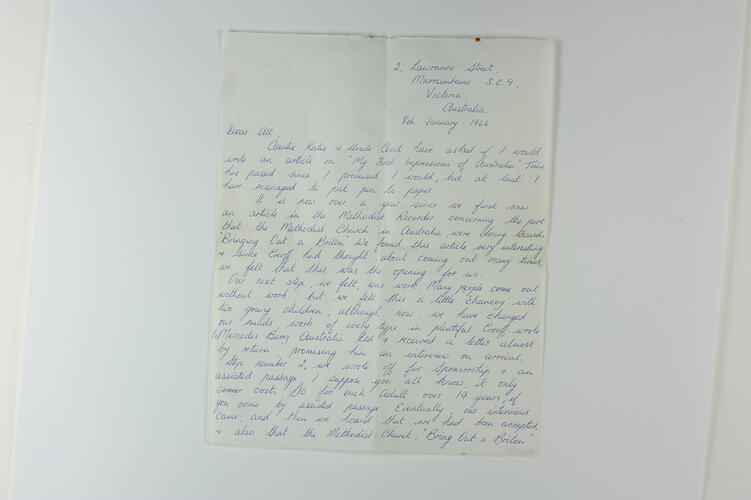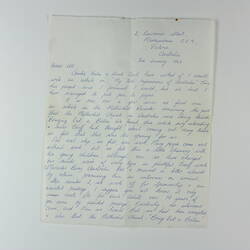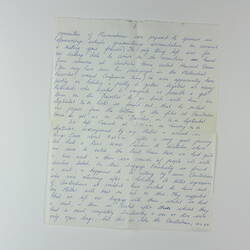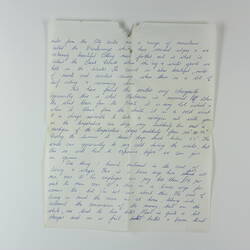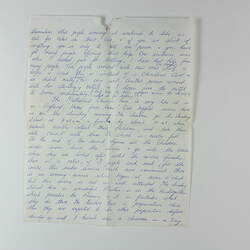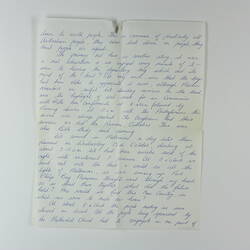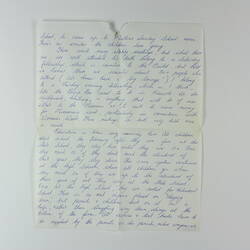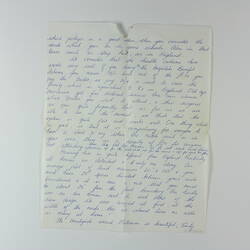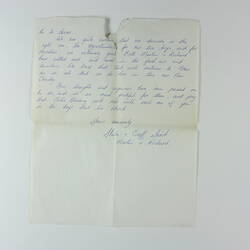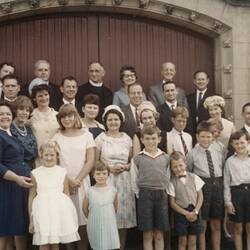Summary
Eleven page letter written by Sheila Snook to family in England after migrating to Australia in 1965 with her husband Geoff and sons Martin and Richard with the support of the Methodist Church under the Bring Out A Briton movement. The letter responds to a request by Sheila's aunt and uncle to write a reflective piece on their migration and settlement experience a year after arriving.
The letter describes the family's decision to leave Nottinghamshire, England, establish networks for employment opportunities upon arrival in Australia, and their successful application for both assisted passage and sponsorship (including accommodation) by the Murrumbeena Methodist Church Bring Out a Briton Committee. The Snook family came out as part of a group of Methodist families on the Sitmar Line Fairstar, departing 14 September 1965 and arriving 13 October. Sheila describes the train and ship journey, their favourable impressions of the Australians they met, their first impressions upon seeing Melbourne, their welcome by the Methodist Committee and press photography, and their arrival and settlement in their church-provided temporary house in Murrumbeena and the local church community. Geoff was immediately employed by Mercedes Benz and Sheila describes shopping, language, the looming currency conversion, the children's education, health services, standard of living, housing, the local countryside, Melbourne's weather and the general kindness of the locals. Sheila ends by reflecting on the decision to migrate as the right one.
Physical Description
11 page single-sided letter, handwritten in blue ink on white paper.
Significance
Statement of Historical Significance:
This letter represents the thousands of letters written home to family by post-World War II British migrants. This letter reveals the personal reflections of one migrant about her new home and settlement expereriences.
Assisted British migration was a constant theme of Australian immigration history until the early 1980s. Government assistance initiatives had an enormous impact on the composition and size of the Australian population, and can be viewed within the broader context of building a white British nation, on the national agenda since Federation and the formalisation of the white Australia Policy through the Immigration Restriction Act of 1901. The relaxing of such policies after World War II in the desire to rapidly increase Australia's population which migration from the UK could not fulfil alone, saw Australia's immigration policies and its social, cultural and economic landscape change forever.
More Information
-
Collecting Areas
-
Author
Mrs Sheila Snook, Murrumbeena, Greater Melbourne, Victoria, Australia, 8 Jan 1966
-
Person Named
Mr Geoffrey Snook, Murrumbeena, Greater Melbourne, Victoria, Australia, 8 Jan 1966
-
Inscriptions
Page 1: 'Dear All,/Auntie Katie and Uncle Cecil have asked if I would write an article on "My First Impressions of Australia"..../Yours sincerely/Sheila & Geoff Snook/Martin & Richard'
-
Classification
-
Category
-
Discipline
-
Type of item
-
Overall Dimensions
200 mm (Width), 265 mm (Height)
-
Keywords
Letters, Immigration Selection, Immigration Policies, Working Life, English Immigration, Assisted Immigration, Religions: Methodist
